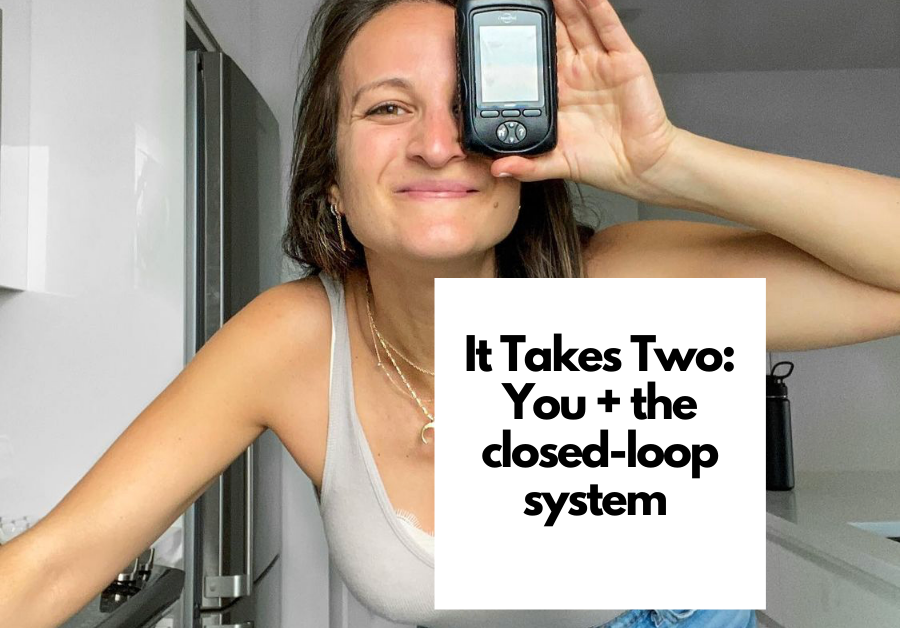Is the closed-loop system the solution to Type 1 Diabetes? Having a CGM and insulin pump work in unison to prevent high and low blood sugars so that you can eat, sleep, exercise, with ease… Is it too good to be true?
Our thoughts are: yes and no.
There’s no denying that the closed-loop system is a huge step forward in diabetes health care. It has the potential to improve blood sugar control so that you can achieve a lower A1C and increased time in range.
Technology is a great tool and has features that make life easier, but where it falls short is that it’s not able to capture all of the nuances of T1D. A system that operates on an algorithm can only scratch the surface of what’s really going on. So, if you’re starstruck over this new technology and believe it’s going to solve all of your T1D problems, you might be setting yourself up to be disappointed in your tech.
This is where your understanding of your body and your diabetes is so important. The skills and strategies you have learned without technology are incredibly valuable and are essential for optimizing the technology you get with a closed-loop system.
3 times you are more knowledgeable than the algorithm:
- Insulin timing: You know that carbs from a donut and carbs from an apple will have significantly different effects on your blood sugar, but your pump only knows that you had carbs, period. You pre-bolus with a little extra time for the donut, but when the closed loop sees your blood sugar trending down slightly it suspends your basal, defeating your strategy and sending your blood sugar up high anyway.
- Exercise: You know you want to go into your afternoon workout class at a slightly higher blood sugar so that you won’t go low. You know you can bolus a little less for lunch to hit that sweet spot, but your closed loop sees your blood sugar sitting at 160 and kicks in a correction, bringing you down to your “target” and forcing you to have a snack pre workout.
- Basal rates: you know your pump will suspend your insulin while you’re sleeping so you don’t go low, but only you know why you’re going low in the first place. The pump does not understand the root cause of blood sugar fluctuations. It’s up to you to figure out if your overnight rates need to change or if your evening meal or activity might be impacting your numbers overnight.
The closed-loop system is a pretty amazing tool, and it works hard to keep you safe and in-range. But it is just one valuable piece of the diabetes puzzle.
The Investment of Time
Within our community, we often hear that people don’t want to spend more time on their diabetes. They resent the amount of time and energy T1D takes from them, so it feels counterintuitive to commit to focusing MORE time on diabetes. Relying on technology to do the work seems like the obvious answer. Sound familiar?
Diabetes technology has come a long way in the last 20 years and these advancements have benefited T1D management and improved many people’s lives. We don’t disagree. Through our coaching practice, though, we’ve seen firsthand over and over again that the tech is not a replacement for doing the work of getting to know your body’s patterns. Relying on the algorithms alone can just create more frustration and confusion.
We’ve found that the answer actually lies in prioritizing your diabetes FIRST by taking time to learn your patterns and create new strategies and habits, allowing you more time and energy in the long run.
If you and your insulin pump work together as a team, you will maximize your diabetes management and get the best results possible.

Be the first to comment